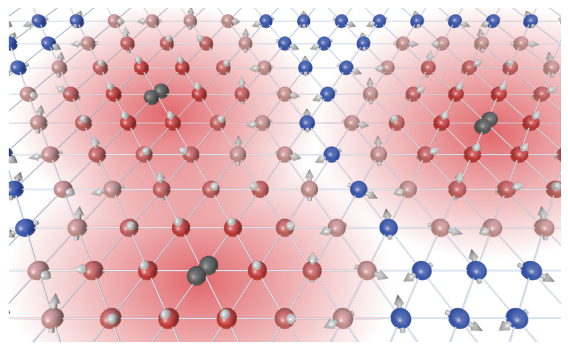News 2024
Fall 2024 Commencement
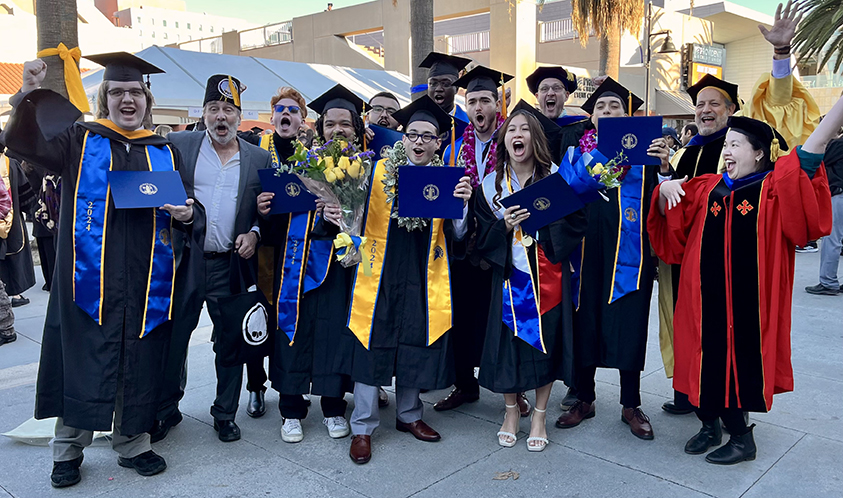
December 19th -- Congratulations graduates! SJSU's College of Science honored this most recent batch of graduating seniors and master's students at the Fall 2024 Commencement.
When Einstein Gets It Wrong
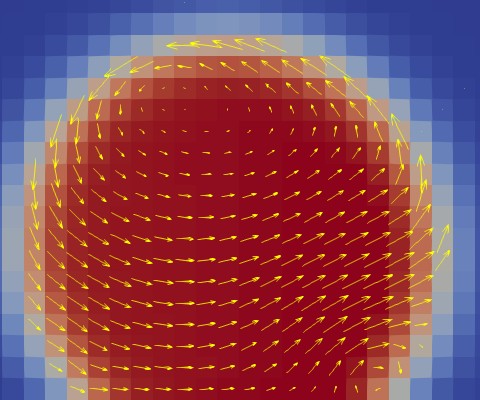 December 10th -- Professor Alejandro Garcia, in collaboration with colleagues at Berkeley
Lab, has simulated the dynamics of nanoscale droplets on a solid surface. The authors'
findings call into question the universality of the Einstein relation between mobility
and diffusion. A preliminary version of the manuscript can be viewed on arXiv, and results are scheduled to appear in a special issue, 250 Years of Brownian Motion, in the journal Physics of Fluids.
December 10th -- Professor Alejandro Garcia, in collaboration with colleagues at Berkeley
Lab, has simulated the dynamics of nanoscale droplets on a solid surface. The authors'
findings call into question the universality of the Einstein relation between mobility
and diffusion. A preliminary version of the manuscript can be viewed on arXiv, and results are scheduled to appear in a special issue, 250 Years of Brownian Motion, in the journal Physics of Fluids.
Ken Wharton Wins a DOE Workforce Development Grant
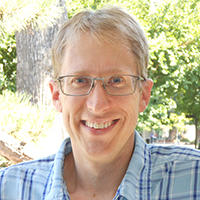 December 9th -- Professor Ken Wharton has been awarded a Department of Energy (DOE)
RENEW grant to sponsor experimental student research internships at the SLAC National
Accelerator Laboratory. The grant is oriented toward particle accelerator technology,
and will fund two students per year from SJSU to conduct research at SLAC over the
next three years. More information on this, including information for students on
how to apply, will be made available in January. Congratulations, Ken!
December 9th -- Professor Ken Wharton has been awarded a Department of Energy (DOE)
RENEW grant to sponsor experimental student research internships at the SLAC National
Accelerator Laboratory. The grant is oriented toward particle accelerator technology,
and will fund two students per year from SJSU to conduct research at SLAC over the
next three years. More information on this, including information for students on
how to apply, will be made available in January. Congratulations, Ken!
Quantum Entanglement Measures Up

December 7th -- Assistant Professor Curtis Asplund has published a paper in the journal Entropy establishing a new measure of quantum entanglement. The manuscript is published with Asplund's former student and now colleague Elisa Panciu. In their paper, the authors define concepts of "predictive states" and "predictive complexity" for subsystems of a quantum system, such as a collection of interacting atoms at extremely low temperatures. (See above for an illustration of how this measure captures the short-range entanglement associated with behaviors like spin waves propagating and colliding in a 1D spin chain.) Dr. Asplund hopes that these concepts will ultimately be helpful in understanding how black holes absorb and emit information.
A Simple Model of Gravitational Lensing
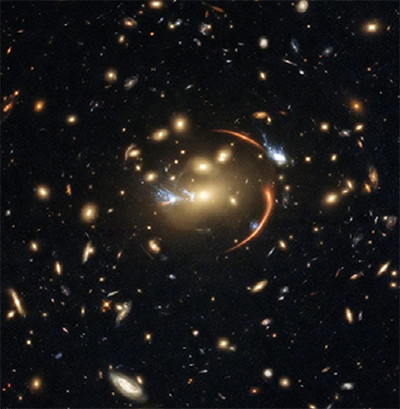 November 1 -- Retired engineer and SJSU Open University student Bogdan Szafraniec
has published paper this month in the American Journal of Physics (AJP) detailing the way in which geometric optics can be used to construct a simple
model of gravitational lensing. Gravitational lensing in turn is among the stranger
phenenomena that can be observed in telescope images of distant objects, and its appearance
can be understood as confirmation of Einstein's general theory of relevativity. As
noted by the editors of AJP, the model described in this paper could be introduced
as a “theoretical toy model” that in turn could help make gravitational lensing and
its use in modern astrophysics accessible to introductory physics students.
November 1 -- Retired engineer and SJSU Open University student Bogdan Szafraniec
has published paper this month in the American Journal of Physics (AJP) detailing the way in which geometric optics can be used to construct a simple
model of gravitational lensing. Gravitational lensing in turn is among the stranger
phenenomena that can be observed in telescope images of distant objects, and its appearance
can be understood as confirmation of Einstein's general theory of relevativity. As
noted by the editors of AJP, the model described in this paper could be introduced
as a “theoretical toy model” that in turn could help make gravitational lensing and
its use in modern astrophysics accessible to introductory physics students.
On the Road with Cal-Bridge
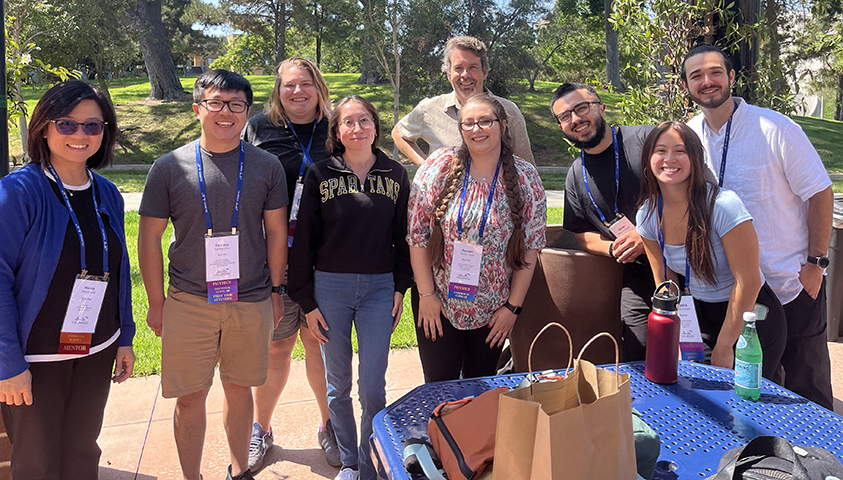
September 14th -- Cal-Bridge Scholars, alumni, and faculty mentors made a strong showing this past September attending the annual Cal-Bridge Research Symposium, held this year at UC Irvine.
The Return of oSTEM
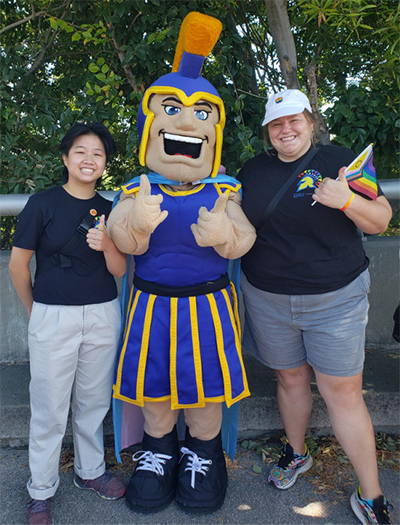 September 2nd -- After years of dormancy, the local chapter of Out in Science, Technology,
Engineering, and Mathematics (oSTEM) has been reinstated, both nationally and locally
as an SJSU Recognized Student Organization. oSTEM is the largest national chapter-based
organization for supporting LGBTQ+ scientists and engineers. Our local oSTEM chapter
is led by students Misa Church and Jasmine Phan, and it is advised by Assistant Professor
Brianne Gutmann. (All three individuals are pictured in the photograph: Phan is on
the left, Prof. Gutmann is on the right, and Church is in the middle playing the illustrius
role of Sammy Spartan.) Interested students can sign up for updates via links on the
chapter's Linktree.
September 2nd -- After years of dormancy, the local chapter of Out in Science, Technology,
Engineering, and Mathematics (oSTEM) has been reinstated, both nationally and locally
as an SJSU Recognized Student Organization. oSTEM is the largest national chapter-based
organization for supporting LGBTQ+ scientists and engineers. Our local oSTEM chapter
is led by students Misa Church and Jasmine Phan, and it is advised by Assistant Professor
Brianne Gutmann. (All three individuals are pictured in the photograph: Phan is on
the left, Prof. Gutmann is on the right, and Church is in the middle playing the illustrius
role of Sammy Spartan.) Interested students can sign up for updates via links on the
chapter's Linktree.
Tech Academy Takes Off
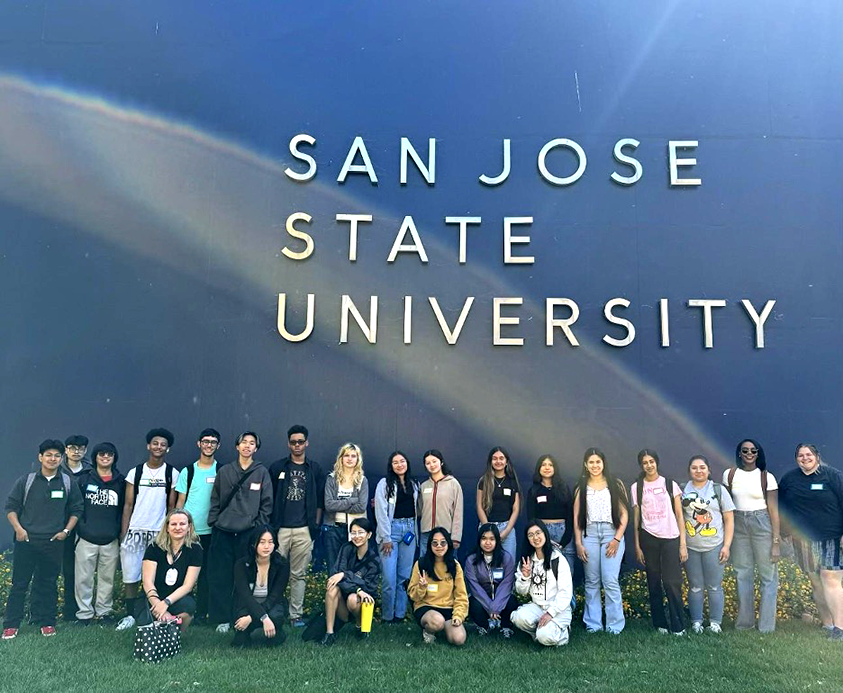
September 2nd -- The summer of 2024 brought in the inagural cohort of students attending the university's new Tech Academy, run by Assistant Professor Brianne Gutmann and colleagues in the Departments of Computer Science, Computer Engineering, and Sociology. All told, the program brought in 20 local high school students to SJSU for an intensive four-week training program, where students lived in dorms at SJSU, built community with each other, and learned about physics and coding! This was the first part of a multi-year experience for the attendees, which will ultimately support them to attend SJSU.
Enrique Cabrera Discovers an Unusual New Galaxy
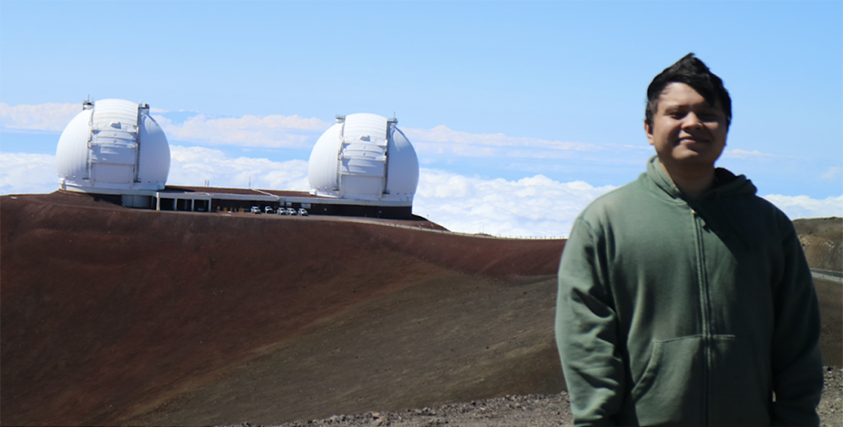
August 23rd -- Physics alum Enrique Cabrera has discovered an unusual dwarf galaxy in archival data while at SJSU, with potential implications for dark matter. The discovery was reported in collaboration with Professor Aaron Romanowsky in Research Notes of the American Astronomical Society. Confirming observations were taken with the Hubble Space Telescope and the Keck Telescope.
The Galaxy, identified by by the label FCC 224, exists on the outskirts of the Fornax cluster, and may be of interest due to the fact that it is believed to possess little-to-no dark matter. This is a strange characteristic in our universe where dark matter is otherwise so prevelant.
Gina Quan Wins College of Science Teaching Excellence Award
August 20th -- Congratulations to Associate Professor Gina Quan, who has won the SJSU College of Science Teaching Excellence Award. Quan has consistently received positive evaluations of her teaching from both students and peer observers. She engages with the students, draws on research based strategies, solicits and incorporates student feedback, builds community in the classroom and takes a holistic view to teaching, focusing not just on content but also on learning skills. It's easy to see why she was chosen for this award!
Introductory Physics Laboratory Upgrades
 July 29th -- Congratulations to Professors Peter Beyersdorf, Ramendra Bahuguna, Ranko
Heindl, Christopher Smallwood, and Neil Switz, who have won an award in the amout
of $162k from the National Science Foundation (NSF) through the Hispanic-Serving Institutions:
Enriching Learning, Programs, and Student Experiences (HSI:ELPSE) solicitation. The
project, entitled "Modernizing Introductory Physics Laboratories for Tomorrow's Technology Workforce," provides funding to purchase laboratory equipment for the Department’s introductory
calculus-based physics course sequence.
July 29th -- Congratulations to Professors Peter Beyersdorf, Ramendra Bahuguna, Ranko
Heindl, Christopher Smallwood, and Neil Switz, who have won an award in the amout
of $162k from the National Science Foundation (NSF) through the Hispanic-Serving Institutions:
Enriching Learning, Programs, and Student Experiences (HSI:ELPSE) solicitation. The
project, entitled "Modernizing Introductory Physics Laboratories for Tomorrow's Technology Workforce," provides funding to purchase laboratory equipment for the Department’s introductory
calculus-based physics course sequence.
Aaron Romanowsky Wins Grant to Study Dark Matter
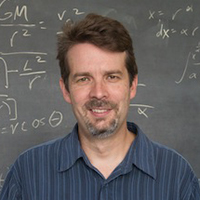 July 26th -- Dark Matter is more than just a popular Sci-Fi novel and TV series. Professor
Aaron Romanowsky has been awarded $16k from NASA's Jet Propulsion Laboratory (JPL)
to conduct research searching for this elusive material in space as part of a project
entitled “A Critical Test for Dark Matter in Dwarf Galaxies of the NGC 1052 Group.”
Congratulations!
July 26th -- Dark Matter is more than just a popular Sci-Fi novel and TV series. Professor
Aaron Romanowsky has been awarded $16k from NASA's Jet Propulsion Laboratory (JPL)
to conduct research searching for this elusive material in space as part of a project
entitled “A Critical Test for Dark Matter in Dwarf Galaxies of the NGC 1052 Group.”
Congratulations!
Curtis Asplund Interviewed by Astrobites
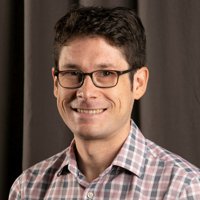 July 23rd -- Assistant Professor Curtis Asplund was interviewed for an article in Astrobites, the astrophysical literature digest journal, regarding his work on nuclear disarmament.
The article discusses the roles of physicists and astronomers in responding to the
increasing threats of nuclear weapons, including how you can get involved!
July 23rd -- Assistant Professor Curtis Asplund was interviewed for an article in Astrobites, the astrophysical literature digest journal, regarding his work on nuclear disarmament.
The article discusses the roles of physicists and astronomers in responding to the
increasing threats of nuclear weapons, including how you can get involved!
Access Network Assembly
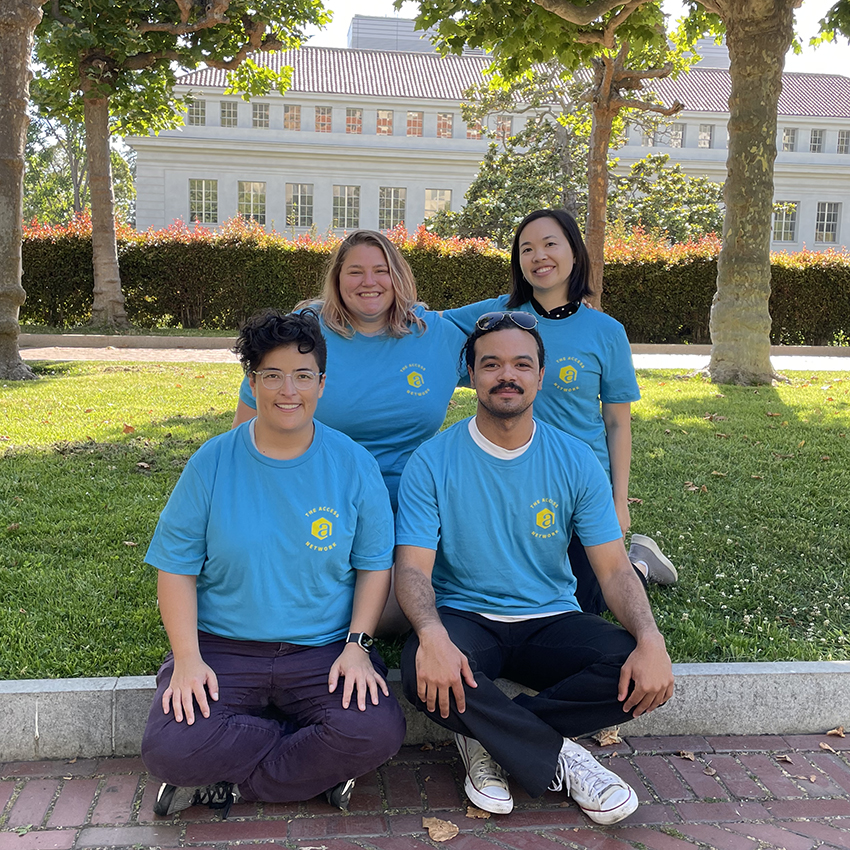
July 9th -- SJSU student Gabriel Gaeta and faculty members Annie Chase, Brianne Gutmann, and Gina Quan attended the 2024 Access Network Annual Assembly at UC Berkeley, CA. The Access Network is a collaboration of nine universities promoting equity and student leadership in the physical sciences.
Call to Action In Response to Nuclear Threats
July 1 -- Assistant Professor Curtis Asplund has published two new articles urging physicists to take new action in opposition to nuclear weapons. The first of these, entitled "International efforts to reduce the increasing danger of nuclear weapons" was published in the Newsletter of the American Physical Society's Forum on Physics & Society. A more detailed piece on the same topic, written by Asplund and three co-authors, was published in the Bulletin of the Atomic Scientists, and is entitled "Nuclear danger is growing. Physicists of the world, unite!"
Congratulations Class of 2024

May 23rd -- Congratulations to the 2024 class of undergraduate physics majors and physics master's students! This year's graduating class of master's students, especially, was among the largest in recent memory.
Departmental Student Award Winners

May 23rd -- The Department is proud to announce the student winners of the 2024 academic awards competition. Winners of the awards are (from left) Adrian Barajas, who has been awarded the Craig Award for Undergraduate Excellence; Pranav Seetharaman, who has been awarded the Craig Award for Graduate Excellence; Zachary Espley, who has been awarded the Craig Outstanding Teaching Assistant Award; and Lailani Kenoly, who has been awarded the Richard & Angela Craig Undergraduate Scholarship.
Adrian Barajas has been awarded the Craig Award for Undergraduate Excellence. Adrian has excelled in all aspects of his undergraduate education earning a 3.84 GPA. He is a Cal-Bridge scholar and has participated in research at SJSU in Dr. Smallwood’s and Dr. Betre’s groups and completed a summer Research Experience for Undergraduates (REU) in 2023 at Penn State where he worked with Dr. Kohta Murase in type II circuminterstellar interacting Supernovae producing neutrino spectra for different physical parameters of such Supernovae. Adrian is selected to participate in the SJSU-SLAC National Lab High Energy Physics traineeship program where he will conduct full time research this summer at SLAC under the guidance of Prof. Natalia Toro and Dr. Kevin Zhough. Since the Spring of 2023 Adrian has served as president of the SJSU Physics and Astronomy Club. In that capacity he has helped oversee student feedback for a critical upcoming transition of the physics department over to Duncan Hall.
Pranav Seetharaman has been awarded the Craig Award for Graduate Excellence. Pranav has excelled in his coursework and research accomplishments in his two years at SJSU. He has a 4.0 Cumulative GPA, and is a coathor on a recent paper that was published in nature. He completed his master’s thesis research project with Dr. Khatami producing a novel algorithm for numerical linked-cluster expansions of quantum lattice models. “His work made it possible to provide exact theory results for experiments done in Prof. Markus Greiner’s lab at Harvard, which emulate a quantum lattice model of fermions using ultracold atoms in optical lattices, leading to the first observation of Nagaoka polarons, ferromagnetic bubbles around a dopant in a sea of antiferromagnetism on the triangular lattice, and ultimately leading to a Nature publication.” In addition to academic research, Pranav has dedicated himself to bettering the lives of people in our community. Throughout his time at SJSU, he served as substitute teacher in schools across San José, including many Title 1 schools in low income communities. He also volunteered at Front Door Communities, a volunteering organization that distributes food, clothing and other essentials to unhoused people. As a result of his service, he received the Bertha Kalm Scholarship from the College of Graduate Studies in 2023.
Zachary Espley has been awared the Craig Outstanding Teaching Assistant Award. Zak has taught Physics 50 labs throughout his time in the MS Physics program at SJSU. Zak’s talent for teaching and his commitment to connecting with his students was evident in his teaching evaluations from multiple semesters, which were top-notch. Zak also received glowing recommendations from faculty members who have observed him in the classroom. Zak is consistently engaging, helpful, and supportive to students in his lab sections. Additionally, Zak has participated in important community-building work outside of the classroom, including engaging with seminar speakers, mentoring undergraduate researchers, and becoming a founding member of the Society of Quantum Engineers SJSU Chapter.
Lailani Kenoly has been awarded the Richard & Angela Craig Undergraduate Scholarship. Lailani has impressed many in the physics department with her passion, drive, and persistence to pursue astrophysics. Lailani has been managing courses and research at SJSU while also working and researching at UC Santa Cruz, and has participated in multiple research experiences in many different labs. She has multiple publications, including one from The Astrophysical Journal. At SJSU, she does research with Dr. Romanowsky, studying “strange galaxies, far away.” She is also a poet! In her time at SJSU thus far, Lailani has distinguished herself and shows great promise as a rising star in our department; we look forward to seeing her continued work!
Bay Area Glimpse of the Northern Lights
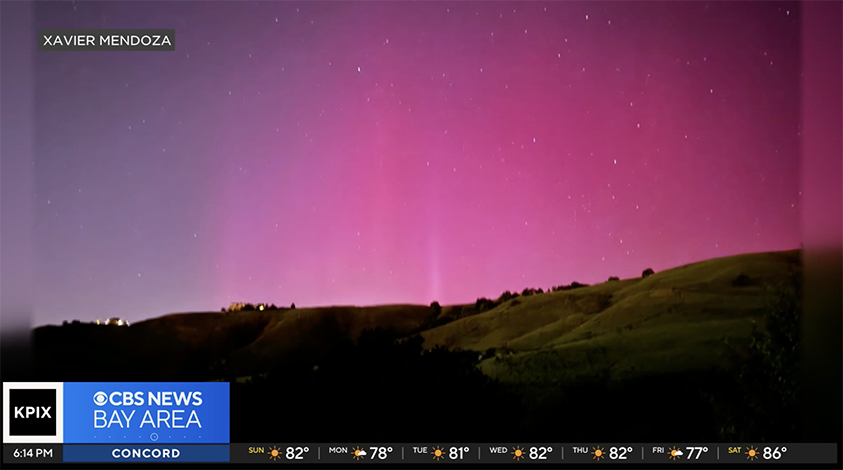
May 10th -- Following an unusually intense round of solar activity over the weekend, the Northern Lights made it down to California. The event was featured on CBS News Bay Area, where graduate student Xavier Mendoza and Professor Aaron Romanowsky shared their reactions. Photos taken by both Xavier Mendoza and Satinder Singh were featured.
Nagaoka Polarons Revealed
In a study published on May 9th in the journal of Nature, Professor Ehsan Khatami and his graduate student Pranav Seetharaman have collaborated with a leading experimental group at Harvard to help explain a sudden transition between two magnetic arrangements in a material that was theorized to take place in a "toy model" of electrons in solids nearly 60 years ago. As part of this work, Khatami and Seetharaman have theoretically verified the first observation of Nagaoka polarons, which are ferromagnetic bubbles around extra particles that grow as the temperature is lowered and ultimately drive the transition.
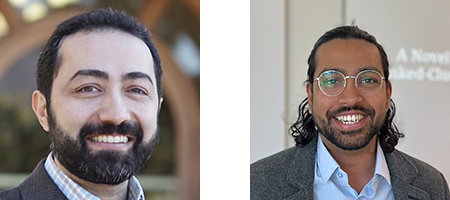
The project provided unique opportunities for Seetharaman and other students in Dr. Khatami’s group to do cutting-edge research in the field of computational quantum many-body physics. Seetharaman, who developed new versatile and efficient codes for a numerical method used in Khatami’s lab, enabling the collaboration, will be pursuing his PhD in Physics at the University of Waterloo in Canada starting this fall. Another graduate student in the group, Robin Newby, is analyzing the vast amount of data obtained during the original collaboration to conduct a follow-up study of the phenomenon on a square lattice. Another undergraduate student, Francisco Correia, is also using Seetharaman's codes to study other models of lattice electrons.
Understanding Transfer Pathways

Department alum Frank Dachille (BS Physics, 2022) and Assistant Professor Gina Quan recently published a Physics Education Research paper studying the trajectories of students transferring from community college to bachelor's granting institutions. The work, entitled "Trajectories of Transfer Students Toward a Bachelor’s Degree-Granting Institution," appears in the May 2024 issue of The Physics Teacher. Frank began this project as an undergraduate research student at SJSU and continues to do research on transfer students as a physics graduate student at Michigan State University. Their paper uses the Life Grid Methodology to illustrate how students' career goals, skill development, and college trajectory evolve over time. Their research shows that transfer students can take a diverse set of pathways through higher education, and argues that transfer students bring valuable perseverance and life experiences to a university setting.
Research Week Roundup
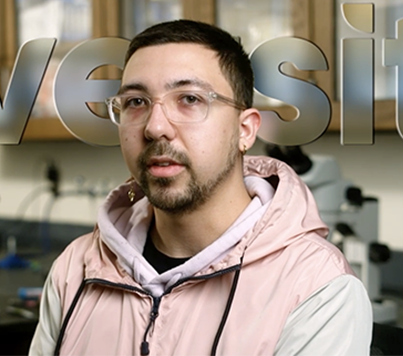 SJSU rounded up its second annual Research Week, boasting a packed schedule and celebrating
a pending classification upgrade for the university to "R2" status according to the
Carnegie classification system. SJSU phys/astro students Jacob Garner and Mariana
Rojas-Montoya occupied prominent roles in a university promotional video commemorating the event.
SJSU rounded up its second annual Research Week, boasting a packed schedule and celebrating
a pending classification upgrade for the university to "R2" status according to the
Carnegie classification system. SJSU phys/astro students Jacob Garner and Mariana
Rojas-Montoya occupied prominent roles in a university promotional video commemorating the event.
College of Science Student Research Day
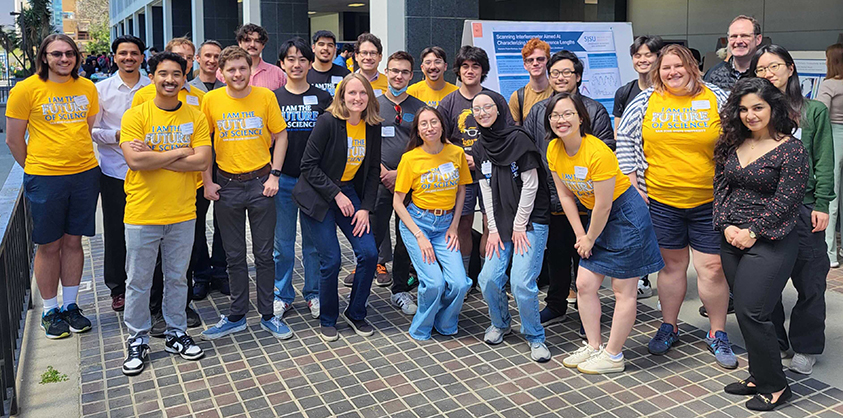
SJSU's College of Science held our 19th annual College of Science Student Research Day this past Friday, on April 19th. Over 250 student authors showed up to present and share their work, and to learn about all the activities going on the college (visit the SJSU College of Science Student Research Day program page [pdf] to see details). These included 24 student participants and eight faculty members in the Department of Physics and Astronomy.
Gina Quan Recognized as an Outstanding Referee by the American Physical Society
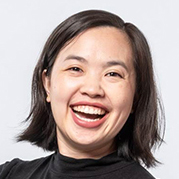 Assistant Professor Gina Quan was selected as one of 156 Outstanding Referees for 2024 by the editors of the American Physical Society’s (APS) Physical Review
journals. Nominations for this award are made based on the number, quality, and timeliness
of referee reports as collected in a database over the last 40 years. Congratulations,
Gina!
Assistant Professor Gina Quan was selected as one of 156 Outstanding Referees for 2024 by the editors of the American Physical Society’s (APS) Physical Review
journals. Nominations for this award are made based on the number, quality, and timeliness
of referee reports as collected in a database over the last 40 years. Congratulations,
Gina!
If You Can Dream It, You Can (Probably) 3D Print it
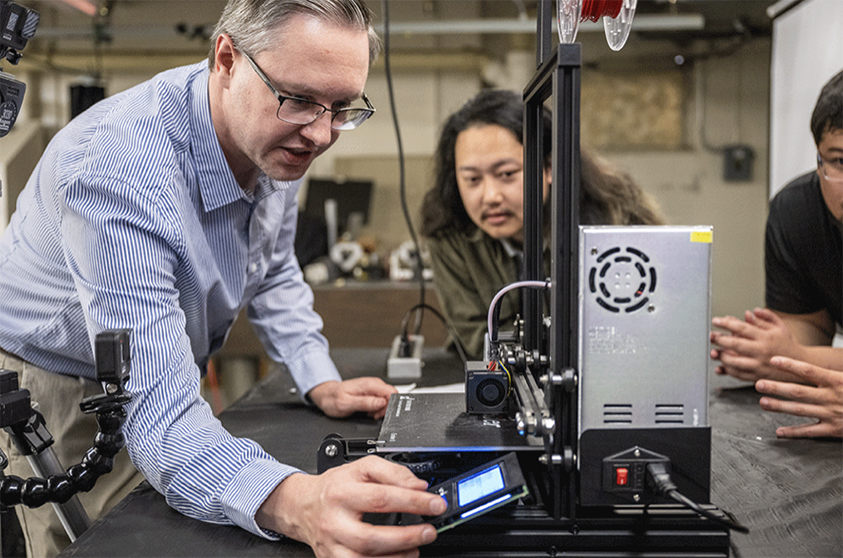
Associate Professor Tom Madura's 3D Printing class (offered last fall in 2023 for the first time as a new physics elective) has been featured in the spring 2024 issue of Washington Square Magazine. For the class, instead of a textbook, Madura had students purchase 3D printers, and projects included a chance to use satellite and NASA data to 3D print topographical maps of sections of the Earth and other planets, and by almost all accounts the class was a huge success. "The most surprising thing to me was how fast the students picked it up and how quickly they got into it," Madura told WSQ Magazine. "They were very enthusiastic. They really just dove right in."
Solar Eclipse 2024
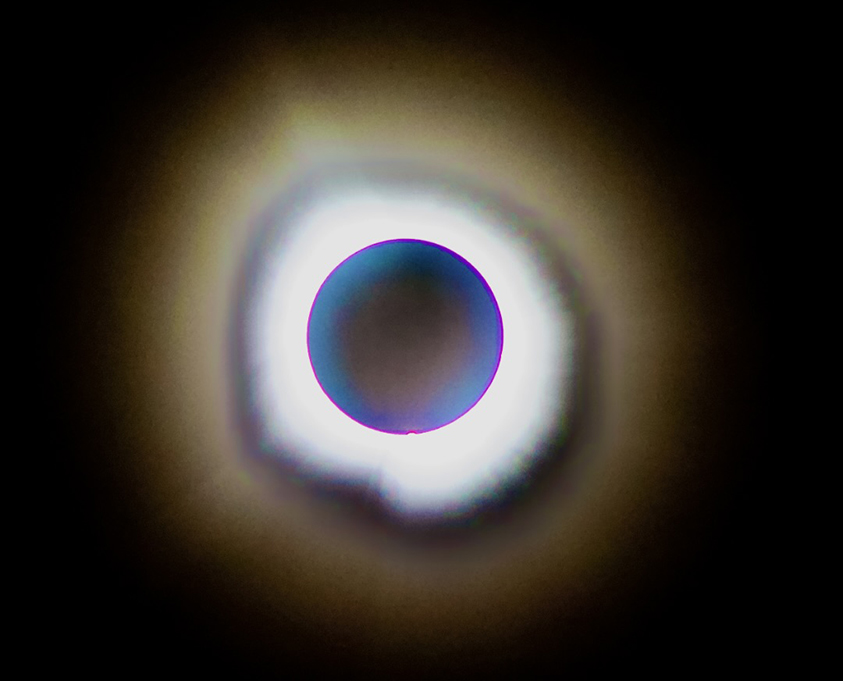
2024 brought a historic solar eclipse to North America, with the path of totality crossing the homes of over 30 million people (total eclipse image above courtesy of Sara Thompson). SJSU students and faculty members alike traveled far and wide for the event. Here in the Bay Area, only a partial eclipse could be seen, but professors Aaron Romanowsky and Peter Beyersdorf, lecturer Olenka Hubicky, and staff member Carlos Morante still brought the event to life by setting up telescopes and sunspotters for students to observe the event here on campus. The event was featured on NBC Bay Area.
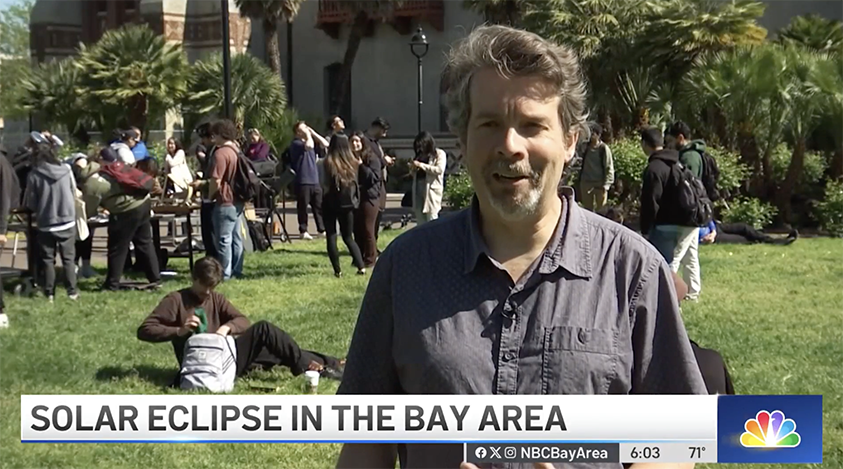
Alexi Musick Selected as a Grad Slam Finalist
Physics and Astronomy Master's student Alexi Musick has been selected as finalist in the 2024 SJSU Grad Slam competition. He along with the other finalists will be competing for cash prizes as they present their graduate research and ideas in three minute, one-slide talks in front of a live audience on April 16, 2024 at 2:00pm in the Hammer Theatre. Alexi's talk is titled "Mapping out Globular Clusters in Perseus Cluster Ultra-Diffuse Galaxies Using the Subaru Telescope." Congratulations, and best of luck!
A New Twist on Spin Torque Oscillators
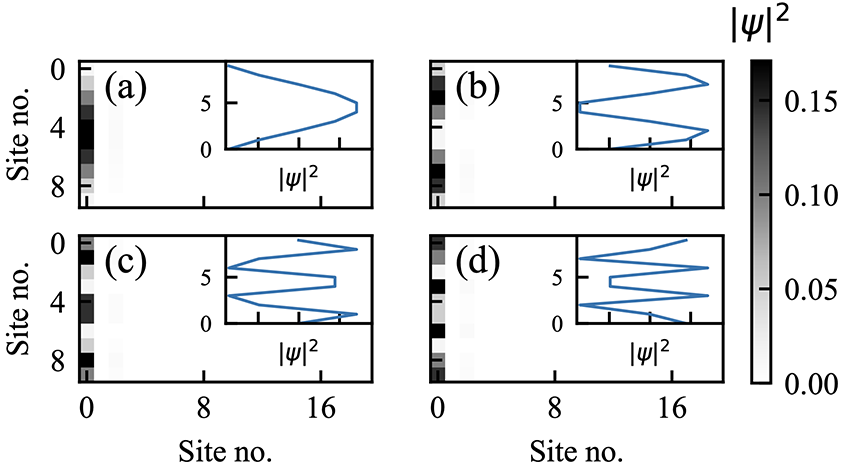
Spin torque oscillators (STO) are small magnetic nanopillars that can exhibit interesting dynamical behavior in the presence of magnetic fields and/or applied spin current. In a new paper published in Physical Review B, SJSU master's student Shivam Kamboj and collaborators including his advisor Hilary Hurst have shown that a two-dimensional array of these STO nanopillars hosts robust, one-dimensional edge states, where the oscillators on one edge of the system start to activate (i.e. undergo magnetic precession) while the rest of the array remains inactive. These edge states are observed even when oscillators in the bulk are driven with the same spin current as those on the edge. This novel behavior stems from the underlying parity-time symmetry of the array, and it can be described by a non-Hermitian Hamilonian (i.e. one where energy is not conserved). Results indicate that two dimensional arrays of STOs may be useful to explore novel behavior in dissipative systems.
Hilary Hurst Wins Early Career Investigator Award
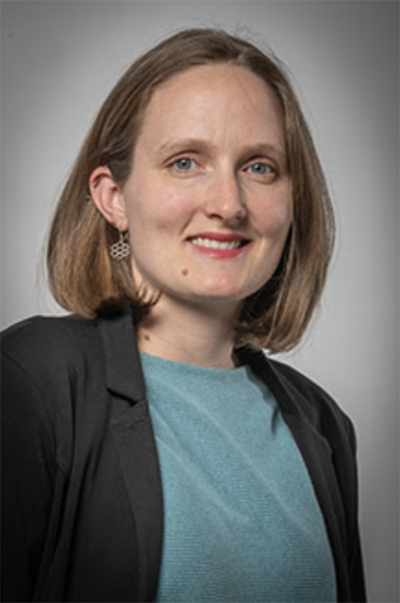 Assistant Professor Hilary Hurst has won a prestigious Early Career Investigator Award from the San José State University Research Foundation. Since joining SJSU, Dr. Hurst
has published seven articles in peer-reviewed journals, and she has brought a total
of $947K in research awards from the National Science Foundation to the campus. In
addition to her research accomplishments, Dr. Hurst was key in establishing the Master
of Science in Quantum Technology (MSQT) program at SJSU, which is a joint endeavor
between the College of Science and the Charles W. Davidson College of Engineering,
and she also spearheaded an NSF Research Traineeship grant, which helped to position
SJSU as a leader in quantum information science research and education. Dr. Hurst’s
work actively supports undergraduate research opportunities through mentorship, underpinning
her student researchers' academic and professional success in a groundbreaking field.
Congratulations, Hilary!
Assistant Professor Hilary Hurst has won a prestigious Early Career Investigator Award from the San José State University Research Foundation. Since joining SJSU, Dr. Hurst
has published seven articles in peer-reviewed journals, and she has brought a total
of $947K in research awards from the National Science Foundation to the campus. In
addition to her research accomplishments, Dr. Hurst was key in establishing the Master
of Science in Quantum Technology (MSQT) program at SJSU, which is a joint endeavor
between the College of Science and the Charles W. Davidson College of Engineering,
and she also spearheaded an NSF Research Traineeship grant, which helped to position
SJSU as a leader in quantum information science research and education. Dr. Hurst’s
work actively supports undergraduate research opportunities through mentorship, underpinning
her student researchers' academic and professional success in a groundbreaking field.
Congratulations, Hilary!
Catching Some Rays
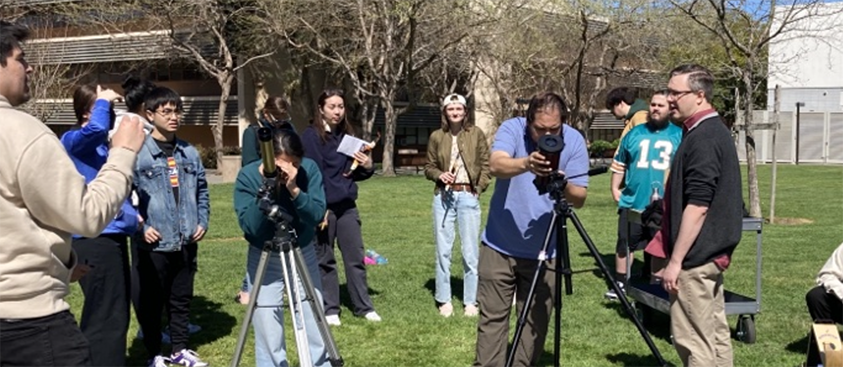
Spring has sprung here in Northern California! Associate Professor Tom Madura held his Astronomy 117B class outside last week, on tower lawn as the spring semester has rolled into March. Students used a variety of telescopes and imaging devices to view sunspots (dark patches corresponding to regions of concentrated magnetic field on the sun's surface) and limb darkening (a term describing the reduction of solar irradiation at the edges of the visible disk).
Spotlight on the MS in Quantum Technology Program
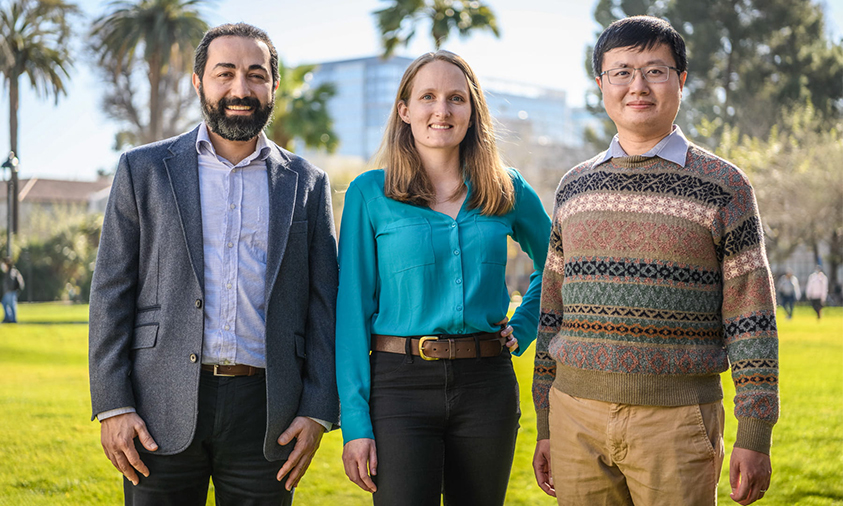
The Department's new Master of Science (MS) in Quantum Technology program has been featured on the SJSU Newsroom blog, featuring interviews from Assistant Professor Hilary Hurst and graduate students James Saslow and Daniel Pilipovic. AY 2023-2024 marks the program's inagaural year, and the program is offered as a joint master's degree between the Department of Physics and Astronomy in the College of Science and the Department of Electrical Engineering in the College of Engineering. Applications for the second-year cohort are open now, with an April 1st deadline. Visit the SJSU Graduate Admissions page for more information.
Oppenheimer's Wake
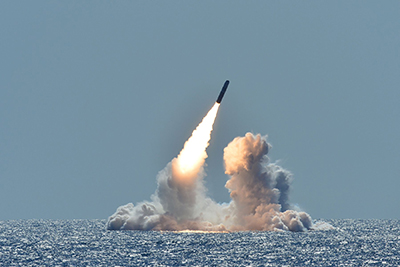 Assistant Professor Curtis Asplund has had Op-Ed piece on the nuclear weapons and
the recent movie Oppenheimer published in The Progressive Magazine. His work details the persistent threat that nuclear weapons pose and the advocacy
needed to counter that threat.
Assistant Professor Curtis Asplund has had Op-Ed piece on the nuclear weapons and
the recent movie Oppenheimer published in The Progressive Magazine. His work details the persistent threat that nuclear weapons pose and the advocacy
needed to counter that threat.
APS March Meeting
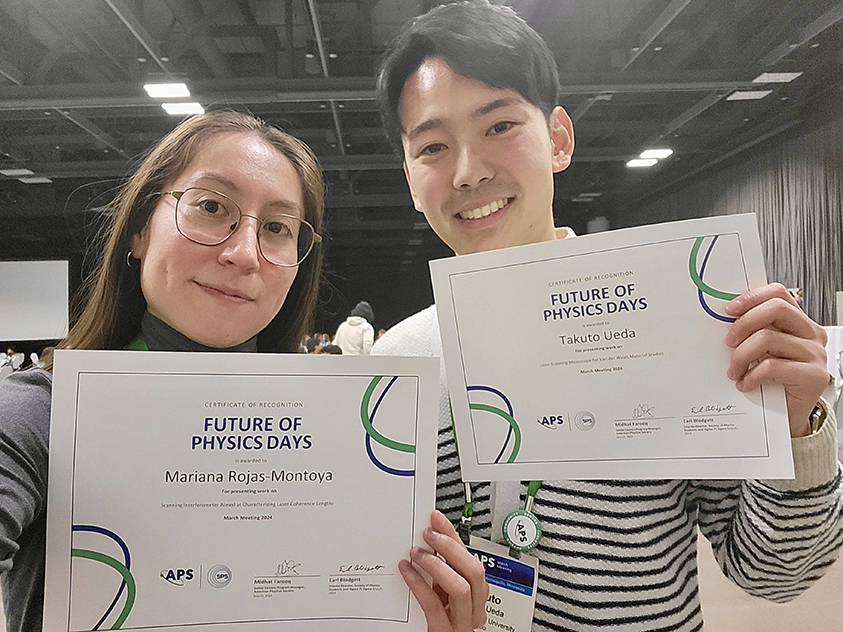
SJSU students, faculty members, and postdocs made a strong showing at the 2024 American Physical Society (APS) March Meeting. The meeting this year was held in Minneapolis, MN, draws over 13,000 physicists annually, and focuses on topics including condensed matter, quantum physics, materials science, and more. SJSU undergraduates Takuto Ueda and Mariana Rojas-Montoya presented talks on laser-scanning microscopy and optical interferometry. Master's student Zak Espley presented a talk on qubit arrays. Postdoc Eduardo Ibarra-García-Padilla presented a talk on the Fermi-Hubbard model. Professor Ehsan Khatami presented a talk on Nagaoka polarons. And master's student Imran Bashir and assistant professor Christopher Smallwood came along for the ride.
SU(N) Spots
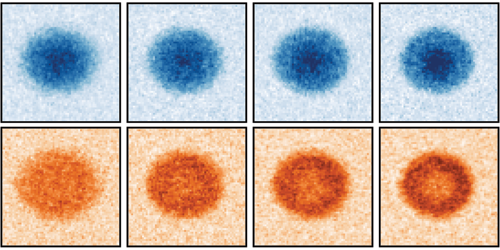
Postdoctoral researcher Eduardo Ibarra-García-Padilla and collaborators have made headway toward solving difficult problems in condensed matter physics by developing and characterizing a new kind of quantum simulator.
In a paper that was published on February 21st in Physical Review Letters and also featured in Physics Magazine, Ibarra-García-Padilla and colleagues have probed an ultracold ensemble of ytterbium atoms, and they have compared their experimental results to numerical methods such as determinantal quantum Monte Carlo (DQMC) and numerical linked cluster expansion (NLCE) techniques to learn about the SU(N) Fermi-Hubbard Model. Models of this type, in turn, have proven notoriously difficult to analytically solve, but they are expected to have relevance for systems ranging from high-temperature superconductors to exotic magnets.
The work was done in collaboration with researchers at Rice University, UC Davis, and also LMU München during 2022-2023. Congratulations Eduardo!
ISB's Upper Floors are Open for Business
 Two of the Department's smaller classes this semester (PHYS 110B and 250) have been
testing the waters of meeting in the brand new upper-floor classrooms of the recently
fully-opened Interdisciplinary Science Building (ISB). These classrooms "belong" to
the College of Professional and Global Education, but College of Science instructors
have gotten permission to use the classrooms when they would otherwise be empty. There
are whiteboards in front and back, and a dedicated desktop computer with a touch screen,
projector, Zoom access, and webcams, and the view is spectacular!
Two of the Department's smaller classes this semester (PHYS 110B and 250) have been
testing the waters of meeting in the brand new upper-floor classrooms of the recently
fully-opened Interdisciplinary Science Building (ISB). These classrooms "belong" to
the College of Professional and Global Education, but College of Science instructors
have gotten permission to use the classrooms when they would otherwise be empty. There
are whiteboards in front and back, and a dedicated desktop computer with a touch screen,
projector, Zoom access, and webcams, and the view is spectacular!
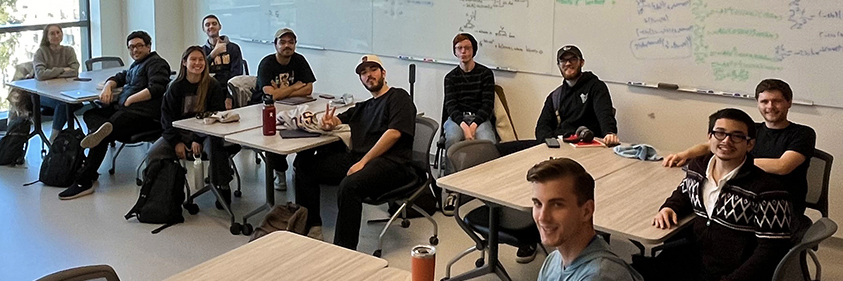
NSF Funding for the Access Network
 Assistant Professors Gina Quan and Brianne Gutmann have received $57k from the National
Science Foundation as part of grant entitled "Collaborative Research: Evaluating Access:
How a Multi-Institutional Network Promotes Equity and Cultural Change through Expanding
Student Voice." The award amount, consisting of $895k in total, has been shared across
five institutions. It continues Quan and Gutmann's work with the Access Network, a research-practice community of students, faculty, and staff across the country
working toward a more diverse, equitable, inclusive, and accessible STEM community.
Assistant Professors Gina Quan and Brianne Gutmann have received $57k from the National
Science Foundation as part of grant entitled "Collaborative Research: Evaluating Access:
How a Multi-Institutional Network Promotes Equity and Cultural Change through Expanding
Student Voice." The award amount, consisting of $895k in total, has been shared across
five institutions. It continues Quan and Gutmann's work with the Access Network, a research-practice community of students, faculty, and staff across the country
working toward a more diverse, equitable, inclusive, and accessible STEM community.
Brianne Gutmann Elected as APS-AAPT Member-at-Large
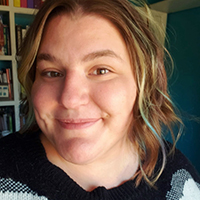 Assistant Professor Brianne Gutmann has been elected as an APS-AAPT Member-at-Large.
The position was granted as an internal election within the APS Forum on Education.
The American Physical Society (APS) is the preeminent professional organization for
physicists in the United States, and is engaged in widespread conference organization
and facilitation. It also oversees the publication of important journals in physics
including Physical Review Letters. The American Association of Physics Teachers (AAPT)
is the nation's most prominent educationally oriented professional organization in
physics. Congratulations, Dr. Gutmann!
Assistant Professor Brianne Gutmann has been elected as an APS-AAPT Member-at-Large.
The position was granted as an internal election within the APS Forum on Education.
The American Physical Society (APS) is the preeminent professional organization for
physicists in the United States, and is engaged in widespread conference organization
and facilitation. It also oversees the publication of important journals in physics
including Physical Review Letters. The American Association of Physics Teachers (AAPT)
is the nation's most prominent educationally oriented professional organization in
physics. Congratulations, Dr. Gutmann!
Eduardo Ibarra Garcia Padilla invited to Chair an APS March Meeting Session
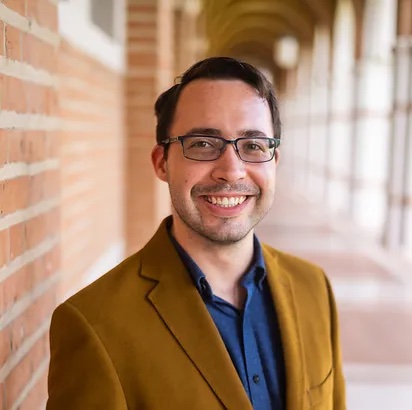 A session at the March Meeting of the American Physical Society this year features
invited speakers from the leading research groups in the world studying the behavior
of atoms cooled to temperatures one billion times colder than outer space. These experiments
can be used to emulate exotic superconductors, magnetic systems, and topological materials.
Dr. Eduardo Ibarra Garcia Padilla, a SJSU Postdoctoral Scholar, is a member of the
group of Prof. Ehsan Khatami, and is involved in quantum simulation and machine learning
studies of cold atoms. He has been invited to chair the session.
A session at the March Meeting of the American Physical Society this year features
invited speakers from the leading research groups in the world studying the behavior
of atoms cooled to temperatures one billion times colder than outer space. These experiments
can be used to emulate exotic superconductors, magnetic systems, and topological materials.
Dr. Eduardo Ibarra Garcia Padilla, a SJSU Postdoctoral Scholar, is a member of the
group of Prof. Ehsan Khatami, and is involved in quantum simulation and machine learning
studies of cold atoms. He has been invited to chair the session.
